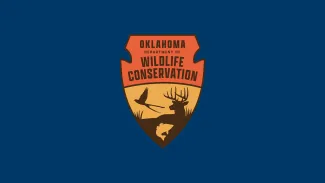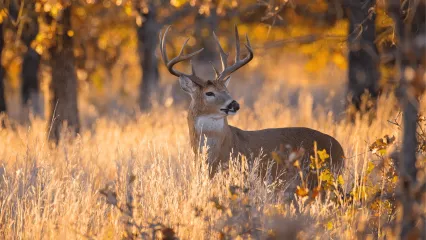
Attention Hunters:
Chronic Wasting Disease has been detected in the area. A Selective Surveillance Area (SSA) has been established for Woodward County.
Major County WMA covers 210 acres in Major County in northwest Oklahoma. Located approximately 13 miles south and 2.5 miles west of Waynoka, this WMA occurs in the mixed grass eroded plains habitat type. Habitat consists of mixed grass uplands dissected by deep canyons that support several hardwood tree species including American elm, bur oak, chinquapin oak, and Eastern red cedar. Water resources are provided by Main Creek which flows year-round across the WMA. Annual precipitation for the area is approximately 25 inches. Driving directions to this WMA are: from the Junction of State Highways 281 & 412, 2 miles south, 2.5 miles west. Access to Major County WMA is Foot Access Only from a parking area at the northeast corner of the area.
From Seiling: 17 miles north on U.S. Hwy 281, 2¼ miles west on county gravel road (which is 2 miles south of U.S. Hwy 281/U.S. Hwy 412 junction).
- Quail: Bobwhite quail may be present in low numbers.
- Deer: White-tailed deer may be present in low numbers.
- Turkey: Rio Grande turkeys may be present in low numbers in the spring.
- Rabbit: Cottontail rabbits are present in fair numbers.
- Furbearers: Coyote, bobcat and raccoon are available.
- Dove: Very limited dove use on Major Co.
Habitat management on Major County WMA primarily involves prescribed grazing, Eastern red cedar control and a limited amount of controlled burning.
No camping facilities are available on Major County WMA. Camping is available at the Little Sahara State Park, located 2.5 miles east and 10 miles north of the WMA. Lodging and restaurants are available at Waynoka. The Waynoka chamber of commerce can be reached at (580) 824-4741.
A rifle range is not available on this WMA.
Very limited fishing opportunity.
Closed Seasons
Same As Statewide Seasons
Seasons w/ Special Restrictions
- Crow, Snipe, Woodcock, Rabbit, Squirrel
Closed during the first nine days of deer gun season.
- Deer Muzzleloader
Closed to antlerless hunting.
- Deer Gun
Open during the first nine days only. Closed to antlerless hunting.
- Quail
Closed during the first nine days of deer gun season. Hunting hours close at 4:30 p.m. daily. Closed to non-resident hunters February 1-15.
- Pursuit with Hounds for Furbearers, Predator/Furbearer Calling
Closed during deer gun season.
- Trapping
Open to water sets, live box traps and enclosed trigger traps only through Jan 31. Open same as statewide Feb 1 through end of February.
No camping allowed.
Fairview Chamber of Commerce
206 E Broadway, Fairview 73737
www.fairviewokchamber.com
fairviewchamber@io2online.com
Major County Tourism
580-227-2527
Oklahoma Tourism and Recreation Department
Post Office Box 52002
Oklahoma City, OK 73152-2002
(800) 652-6552 or (405) 521-2409
www.travelok.com
Waynoka Chamber of Commerce
PO Box 173, Waynoka 73860
580-824-4741
Controlled Hunts: Yet More Ways to Up Your Odds
Additional features continue to be added to the Wildlife Department’s controlled hunts program.
Cackling Geese Tracked in Central Flyway Study
Researchers are tracking cackling geese wintering in a five-state study area to learn more about their movements and habitat preferences.
Study Focused on Bats and Disease-causing Fungus
Bat surveys were conducted to learn more about Oklahoma’s bat communities and hundreds of bats were swabbed for the fungus that causes white-nose syndrome.


